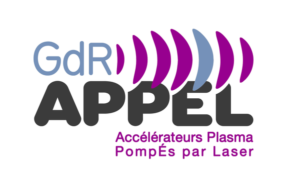Orateur
Description
The ENL group (LP2IB) aims to accelerate ions up to several tens of MeV by the interaction of a high-intensity laser with an overcritical gas jet. This gas target is self-regenerating and does not create debris; so it can be used with the new generation of high-power lasers operating at high repetition rates.
One way to accelerate ions in a gas jet is to create a shock wave at its centre where the density is overcritical (nc ≈1021cm-3) with a strong gradient. This acceleration process is called Collisionless Shock Acceleration (CSA). However, around the gas jet, there is an extended peripheral zone with low molecular density where the laser pulse interacts and is degraded, thus losing its integrity and its energy needed to trigger the CSA process. To address this problem our collaboration aims to minimise this low density region by shaping the gas jet with a low intensity prepulse.
An experimental campaign at GSI on the PHELIX laser facility has been set up with a low-energy prepulse (1J, τ = 500fs) that precedes the intense main pulse (same pulse duration, E ∈ [50;100]J i.e. an intensity ~ 1020W.cm-2) by less than 1ns. To characterise the modified target interacting with the main pulse, a small part of the pulse is frequency doubled to illuminate a Nomarski interferometer and an shadowgraphy setup, and the kinetics of the target shaping is recorded with a streak camera illuminated with a backlighting laser of few ns. The accelerated ions are measured at different angles (0°, 45° and 90°) by 3 Thomson parabolas equipped with Image Plates from which energy spectra can be extracted. First results will be presented in this talk.

